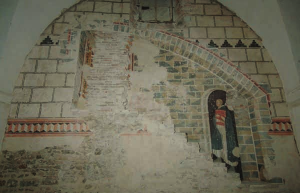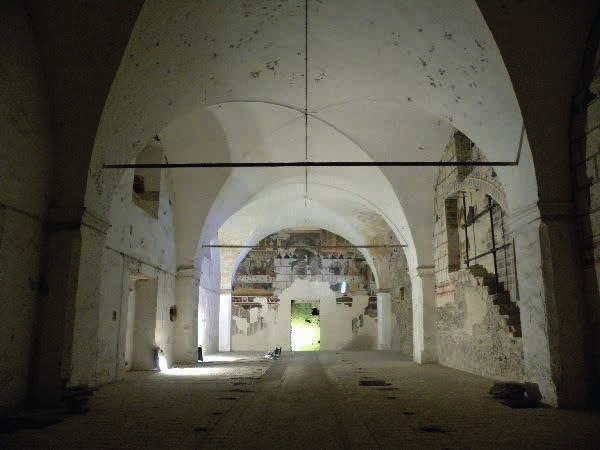DI VALENTINA PICCINI
A templar site in Città di Castello: the hypothesis comes from the pictorial discoveries in Santa Maria della Carità, a long religious site, alongside the Cloister of San Domenico to which a few years ago the town of Città di Castello dedicated a conference.
The reports of the work tell about the reconstruction that then made Francesca Abbozzo, scientific coordinator of the conference and director of the restoration of the frescoes. For a long time it was used as a warehouse for tobacco. In the mid-1950s the fresco was already unrecognizable and it was not until 2008 that we tried to test what was hidden under the layer of time and the residue of improper use. “Thus the Cenacle emerged and then, a second wall began to emerge with the figure of a Dominican was imposed.

The frescoes of the fifteenth century coexist with an older layer dating back to at least two centuries before, which have a clearly templar nature”. They are part of the original decorative apparatus of this, which could have been a church but also a temple, since the motifs refer to the stone of the temple in Jerusalem.
The structure of the original site is lost, the body is set back from the current road, reduced both in height and in the height of the floor. Of course, a greater investigation would be necessary to bring to light what is kept in the structure and better frame what was probably a commander templar, as suggested by the nearby San Giovanni in Campo and the Brotherhood of Frustrati.
A diachronic reflection also leads us to think that there were concentrated, despite being an extramoenia area, important complexes: the nearby archaeological site and the subsequent Renaissance palace, the review of the complex of San Domenico, with the church and a new orientation of the cloister, finally the hospital, are pieces of constancy in the centrality on which we must investigate, in connection with the numerous traces that the territory offers starting from the deposits of the Pinacoteca in which are kept frescoes and finds of the church of Santa Caterina, now in the F.A.T. complex and not recognizable in the appearance it had until the fifties.
“Rignaldello, Celle, Morra, Badia Petroia show clear traces of templar symbols, witnessing a spread and penetration of this order in the round”. Speaking at the conference also Paolo Caucci van Saucken of the University of Perugia had remembered that “in Città di Castello was at a crossroads of the Templar paths. In Rignaldello the hospital was known but the frescoes revive the hypothesis of a real commenda. The naming of churches could provide additional clues in this regard along with the large amount of templar symbols in architectural decorations. Documentary evidence supports the thesis on a centrality, so far underestimated of Central Italy and in particular of this valley, which was an obligatory and convenient road past the passes, in and out towards Rome. The Templars here therefore organized themselves because the quantity of flows required structures and means of assistance to pilgrims and wayfarers on the way”.
Hypothesis for now but very fascinating.
